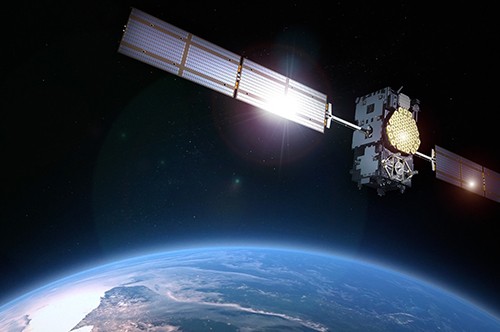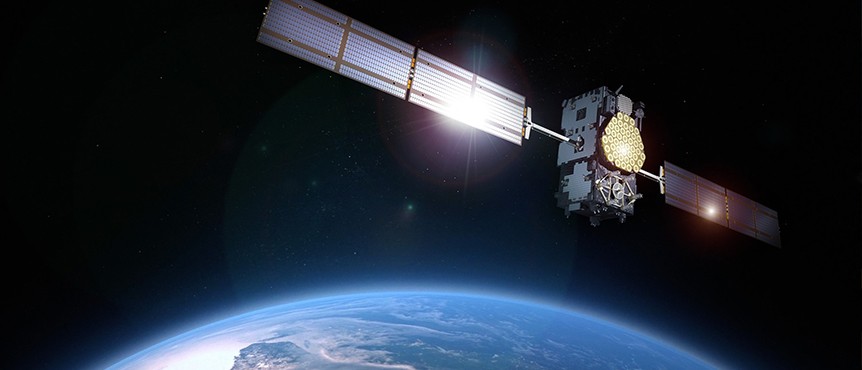Solving an age-old problem that vexes all commercial Low Earth Orbit Satellites.


Since 2012, a key strategic move has been to develop a communications service to improve the operational efficiency of the expanding Low Earth Orbit (LEO) satellite based business. With its IDRS service, Addvalue plans to participate in this market, one that is projected to grow rapidly in the years to come.
Since the beginning of the Space age, virtually all non-synchronous satellites have operated with very limited non-real time communications support. Only the most important missions, such as manned launches and some US military satellites, are supported by 24/7 on demand data links. LEO satellites typically circle the Earth in less than 130 minutes and appear to move very swiftly to an observer on the ground. Currently the vast majority of LEO satellite missions are supported by networks of a small number of ground Earth stations distributed around the globe. Due to the limited number of Earth stations and the speed of the LEO satellites, these ground earth stations can only provide intermittent communications services. To date, a typical LEO satellite is supported by from one to 10 minute long communications sessions, or passes, a day. Thus communications with a LEO satellite are currently unavailable for long periods of time. Furthermore, this limited availability is rigidly set in advance by the characteristics of the LEO orbit and the location of the supporting Earth stations.
This imposes limitations on how LEO satellite operations can be effectively and efficiently conducted. For instance, any anomaly on board the LEO satellite cannot immediately be reported to the satellite operator for diagnosis and quick resolution. This delay in restoration of LEO satellite service can have significant economic impact. Real-time mission tasking is currently not possible since the LEO satellite operator must wait for the next available scheduled ‘fly-over-Earth-station’ session. With IDRS, LEO satellite operators can rapidly respond to data collection opportunities that would otherwise be missed. Applications that need longer sessions than the ‘fly-over-Earth-station’ time slot are not possible under the current scheme of rigid operations. There has been an increase in the use of more than one LEO satellite configured in a constellation for more sophisticated missions. The need for more real-time communications among these LEO satellites operating in a coordinated manner is crucial for such operations. Last, but not least, with IDRS the cost and duration of the commissioning period for new LEO satellites is greatly reduced.
What Addvalue has tested is the technical feasibility of leveraging a commercially available Geosynchronous Earth Orbit (GEO) satellite constellation system as a means to relay data to and from an orbiting LEO satellite so as to provide on-demand, near real-time data link services.
Historically, Addvalue has been involved in the development of sophisticated mobile satellite communication terminals compatible with the Inmarsat I4 constellation BGAN network since 2004 – before the launch of the Inmarsat I4 constellation itself. Building upon these many years of experience, and with a view to expand its business beyond traditional Earth-bound markets, Addvalue began in 2012 to explore the feasibility of developing a terminal suitable for deployment on small LEO satellites. The aim being to provide economical low latency, on-demand data communications known as Inter-Satellite Data Relay System (“IDRS”) services to support LEO satellite operations. The Addvalue IDRS service will operate via the highly reliable Inmarsat I4 constellation and its BGAN network and be made available to LEO satellite operators across the globe.
Supported through a grant provided by the Office for Space Technology and Industry (OSTIn) of the Singapore Economic Development Board (EDB), Addvalue developed its first space-resilient communications terminal. An intermediate outcome of this endeavor is the realization of the Velox-II project, which involves a nano-size LEO satellite that carries the Addvalue communication payload for conducting the IDRS technical trial over the Inmarsat BGAN network. Developed in collaboration between Addvalue and Nanyang Technological University (NTU), the Velox-II was launched on 16 December 2015 and has been undergoing over a year of in-orbit tests. These tests have fully demonstrated the technical feasibility of Addvalue IDRS operation over the Inmarsat BGAN network.
The Velox-II’s IDRS payload fits into a 2-U physical size and weighs less than 2kg. The Addvalue IDRS terminal will be a good fit for LEO satellites of down to nano-scale (100Kg or lighter). Capable of supporting data rates in excess of 100 Kb/s, the Addvalue IDRS solution is capable of providing on-demand 24/7 data connection services and mid-size data transfer. This is certainly a game changer in the existing way most commercial LEO satellites are operating their telemetry and command communications. By eliminating the in-sight-of-an-Earth-station limitation and providing an on-demand real-time communications link to LEO satellites, Addvalue hopes to provide a reliable platform for new market opportunities for LEO satellite operators in the foreseeable future.
The in-orbit testing of the Addvalue’s IDRS terminal on Velox-II will continue to provide valuable test data for our engineers to analyze and improve the design for commercial purposes. Concurrently, Addvalue is in discussion with several leading industrial players in the LEO satellite industry to launch commercial IDRS service no later than 2020.

Since 2012, a key strategic move has been to develop a communications service to improve the operational efficiency of the expanding Low Earth Orbit (LEO) satellite based business. With its IDRS service, Addvalue plans to participate in this market, one that is projected to grow rapidly in the years to come.
Since the beginning of the Space age, virtually all non-synchronous satellites have operated with very limited non-real time communications support. Only the most important missions, such as manned launches and some US military satellites, are supported by 24/7 on demand data links. LEO satellites typically circle the Earth in less than 130 minutes and appear to move very swiftly to an observer on the ground. Currently the vast majority of LEO satellite missions are supported by networks of a small number of ground Earth stations distributed around the globe. Due to the limited number of Earth stations and the speed of the LEO satellites, these ground earth stations can only provide intermittent communications services. To date, a typical LEO satellite is supported by from one to 10 minute long communications sessions, or passes, a day. Thus communications with a LEO satellite are currently unavailable for long periods of time. Furthermore, this limited availability is rigidly set in advance by the characteristics of the LEO orbit and the location of the supporting Earth stations.
This imposes limitations on how LEO satellite operations can be effectively and efficiently conducted. For instance, any anomaly on board the LEO satellite cannot immediately be reported to the satellite operator for diagnosis and quick resolution. This delay in restoration of LEO satellite service can have significant economic impact. Real-time mission tasking is currently not possible since the LEO satellite operator must wait for the next available scheduled ‘fly-over-Earth-station’ session. With IDRS, LEO satellite operators can rapidly respond to data collection opportunities that would otherwise be missed. Applications that need longer sessions than the ‘fly-over-Earth-station’ time slot are not possible under the current scheme of rigid operations. There has been an increase in the use of more than one LEO satellite configured in a constellation for more sophisticated missions. The need for more real-time communications among these LEO satellites operating in a coordinated manner is crucial for such operations. Last, but not least, with IDRS the cost and duration of the commissioning period for new LEO satellites is greatly reduced.
What Addvalue has tested is the technical feasibility of leveraging a commercially available Geosynchronous Earth Orbit (GEO) satellite constellation system as a means to relay data to and from an orbiting LEO satellite so as to provide on-demand, near real-time data link services.
Historically, Addvalue has been involved in the development of sophisticated mobile satellite communication terminals compatible with the Inmarsat I4 constellation BGAN network since 2004 – before the launch of the Inmarsat I4 constellation itself. Building upon these many years of experience, and with a view to expand its business beyond traditional Earth-bound markets, Addvalue began in 2012 to explore the feasibility of developing a terminal suitable for deployment on small LEO satellites. The aim being to provide economical low latency, on-demand data communications known as Inter-Satellite Data Relay System (“IDRS”) services to support LEO satellite operations. The Addvalue IDRS service will operate via the highly reliable Inmarsat I4 constellation and its BGAN network and be made available to LEO satellite operators across the globe.
Supported through a grant provided by the Office for Space Technology and Industry (OSTIn) of the Singapore Economic Development Board (EDB), Addvalue developed its first space-resilient communications terminal. An intermediate outcome of this endeavor is the realization of the Velox-II project, which involves a nano-size LEO satellite that carries the Addvalue communication payload for conducting the IDRS technical trial over the Inmarsat BGAN network. Developed in collaboration between Addvalue and Nanyang Technological University (NTU), the Velox-II was launched on 16 December 2015 and has been undergoing over a year of in-orbit tests. These tests have fully demonstrated the technical feasibility of Addvalue IDRS operation over the Inmarsat BGAN network.
The Velox-II’s IDRS payload fits into a 2-U physical size and weighs less than 2kg. The Addvalue IDRS terminal will be a good fit for LEO satellites of down to nano-scale (100Kg or lighter). Capable of supporting data rates in excess of 100 Kb/s, the Addvalue IDRS solution is capable of providing on-demand 24/7 data connection services and mid-size data transfer. This is certainly a game changer in the existing way most commercial LEO satellites are operating their telemetry and command communications. By eliminating the in-sight-of-an-Earth-station limitation and providing an on-demand real-time communications link to LEO satellites, Addvalue hopes to provide a reliable platform for new market opportunities for LEO satellite operators in the foreseeable future.
The in-orbit testing of the Addvalue’s IDRS terminal on Velox-II will continue to provide valuable test data for our engineers to analyze and improve the design for commercial purposes. Concurrently, Addvalue is in discussion with several leading industrial players in the LEO satellite industry to launch commercial IDRS service no later than 2020.